Efficient Appointment Scheduling Software: Streamline Your Appointments

Introduction
Appointment scheduling software has revolutionized the way businesses manage their appointments, offering streamlined operations and enhanced customer service. In today’s fast-paced world, where convenience and transparency are paramount, consumers expect the ability to schedule appointments online anytime. These software tools not only meet these expectations but also optimize resource allocation and provide actionable insights.
By implementing efficient appointment scheduling software, businesses can maximize productivity, reduce no-shows, and meet the demands of modern consumers. Whether in healthcare, beauty, education, legal, or fitness industries, these industry-specific applications are transforming the way appointments are managed and enhancing overall operational efficiency.
Key Benefits of Appointment Scheduling Software
- Streamlined Operations: For businesses inundated with the complexity of managing numerous appointments, free appointment scheduling apps are revolutionizing the way these tasks are handled. By integrating these tools, companies can automate the entire booking process, thereby freeing up precious time that can be better spent on other core business activities. Small Business Trends highlights the efficiency of these systems in reducing manual input and minimizing errors, which is particularly beneficial for small businesses looking to grow without the additional administrative burden.
- Consumer Expectations Met: Today’s savvy consumers expect convenience and transparency in their interactions, akin to their experiences with online services across other sectors. An overwhelming 89% of patients, for example, consider the ability to schedule appointments online anytime as critical, reflecting a broader consumer desire for user-friendly and accessible services.
- Enhanced Customer Service: By providing a centralized platform for managing appointments and viewing schedules, these apps not only avoid the pitfalls of double bookings but also offer automated reminders. This greatly enhances the customer experience, as clients can book at their convenience and be confident that their appointments are secure and remembered.
- Resource Optimization: Free appointment scheduling apps don’t just organize calendars; they optimize the allocation of staff, equipment, and facilities. Such effective utilization ensures appointments are evenly distributed, which is crucial for balancing workloads and improving care coordination, as evidenced by Lightning Bolt’s positive outcomes reported by KLAS.
- Actionable Insights: With the added benefit of reporting and analytics features, businesses gain valuable insights into appointment trends and peak times. This data can inform decision-making and resource planning, ultimately leading to more informed strategic choices and streamlined operations, as was the case with Somerset Academies of Texas’s integration efforts.
Core Features of Efficient Appointment Scheduling Software
Imagine a world where scheduling appointments feels like a breeze, where no-shows are a rarity, and your staff can focus on what truly matters—your business. That’s the promise of modern appointment scheduling software, and it’s transforming how companies operate.
Take 3Bookers, for instance, a platform created out of sheer necessity for a tool that’s both easy on the wallet and a joy to use. Its creators, led by Evgeny Viner, knew the frustration of juggling bookings and aimed to simplify this for professionals globally. Their result? A robust system that’s winning over industries from healthcare to event planning.
The benefits are clear: online booking allows customers to snap up their preferred time slots without the back-and-forth, while real-time scheduling keeps everyone in sync. Automated reminders, a staple of the software, mean fewer missed appointments and happier clients. These reminders can pop up as emails, texts, or even push notifications—whatever works best.
Synchronization is the unsung hero here. By seamlessly integrating with calendars like Google or Outlook, appointments are up-to-date across all platforms. And with everything accessible from a centralized dashboard, customization and management are just a click away, making life easier for businesses of all sizes.
But it’s not just about ease of use. The data-driven age demands analytics, and advanced systems deliver. They can churn out reports that shed light on trends and performance, arming businesses with the insights to fine-tune their operations.
Small businesses, in particular, are reaping the rewards. They’re saving precious time with automated bookings, according to Small Business Trends, and focusing on growth rather than getting bogged down in admin. Plus, with 89% of patients preferring the convenience of online booking, as found in a survey, it’s clear that this technology isn’t just nice to have—it’s crucial for meeting modern expectations.
So, from startups like 3Bookers to healthcare giants leveraging AI for complex scheduling, the evidence is stacking up: efficient appointment scheduling software isn’t just a tool—it’s a game-changer for businesses eager to thrive in today’s fast-paced world.
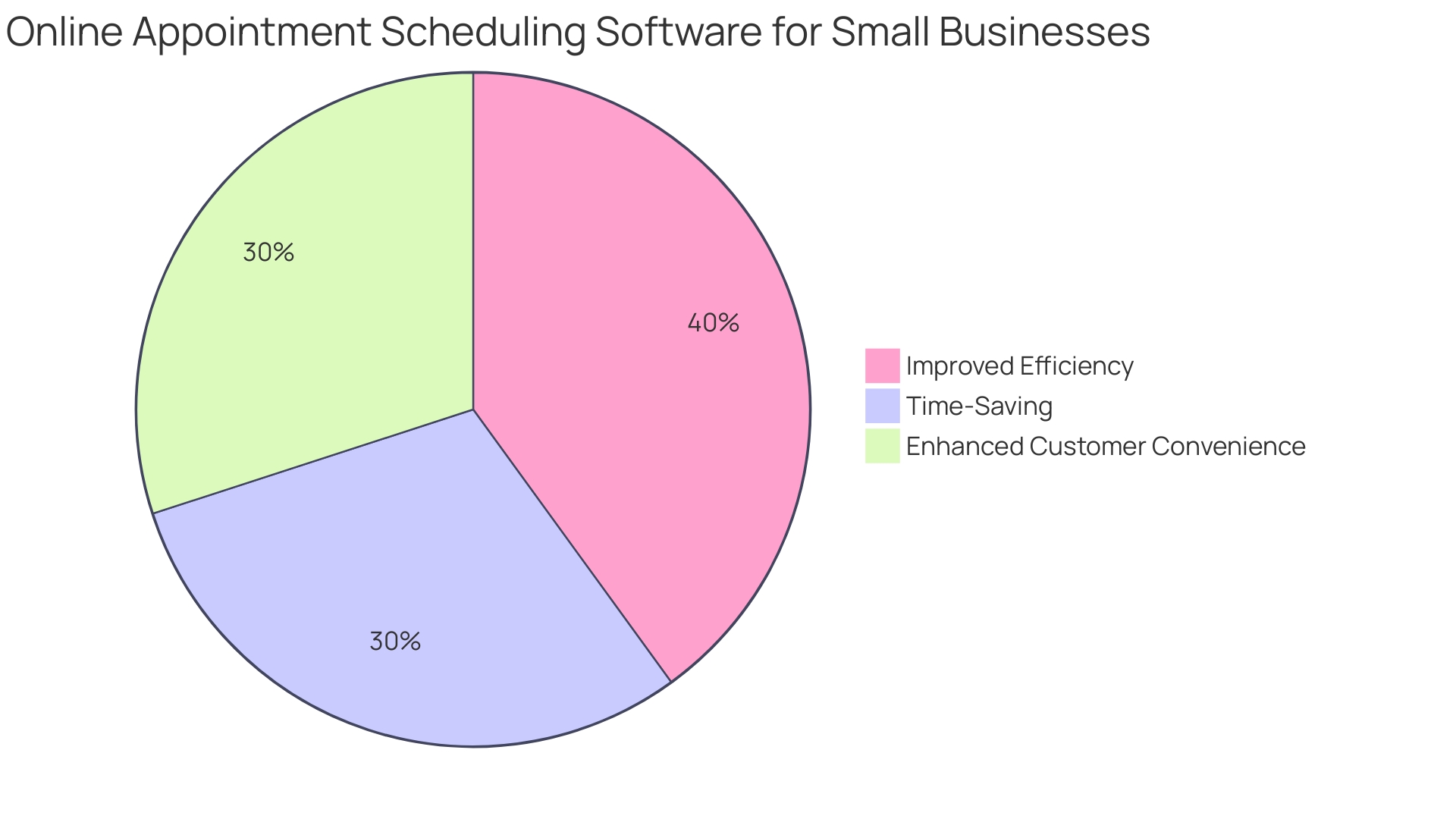
Best Practices for Implementing Appointment Scheduling Software
Adopting free appointment scheduling apps and software can transform the way small businesses manage their appointments, offering a seamless and efficient solution that aligns with today’s consumer expectations. To maximize the benefits, it’s essential to approach implementation with a strategic mindset. Here’s a roadmap to help you integrate this technology with finesse:
- Identify Your Targets: Pinpoint exactly what you hope to achieve with your scheduling software. Is it to slash the rate of missed appointments, elevate customer satisfaction, or to better allocate your resources? Clarity on your objectives will steer your strategy in the right direction.
- Select with Care: With a plethora of scheduling tools available, it’s important to pick one that ticks all the boxes for your particular business needs. Key considerations include user-friendliness, the potential to scale, how it meshes with existing systems, and the support on offer. Tap into free trials and demos—they’re invaluable for hands-on evaluation.
- Empower Your Team: The success of new software hinges on your staff’s competence in using it. Invest in thorough training sessions and provide easy-to-digest guides for ongoing reference. Open the floor for feedback to tackle any teething problems head-on.
- Educate Your Customers: Keep your customers in the loop. Enlighten them on how the new system will enhance their experience and give them the nitty-gritty on how to get onboard. Clear, proactive communication is key to a smooth transition and will boost the likelihood of your customers embracing the change.
- Iterate and Enhance: Post-implementation, keep a close eye on how the software fares. Leverage feedback from both staff and customers, alongside performance metrics, to finetune the system for peak performance.
By implementing these best practices, your business can join the ranks of those reaping the substantial rewards of online appointment scheduling software—such as the 20 businesses recently spotlighted by Small Business Trends. These tools are not just about saving time by automating bookings, they’re about meeting the modern patient’s demand for convenience—89% of whom value the ability to book appointments anytime online. With the right software, you can offer transparency and a user-friendly experience that today’s patients, who are also discerning consumers, have come to expect.
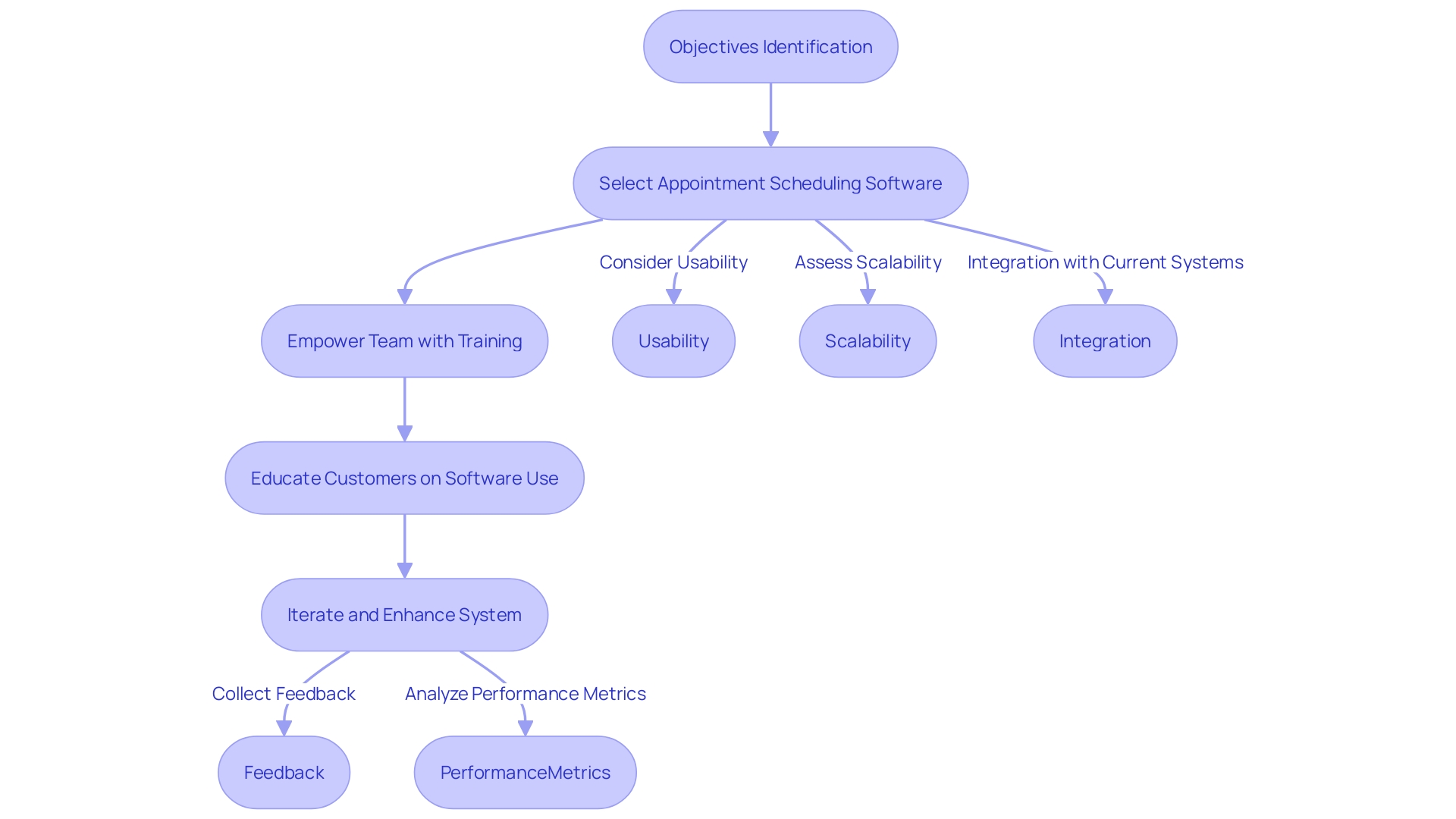
Maximizing Productivity and Minimizing Downtime
Transforming how your business schedules appointments not only streamlines operations but also enhances the customer experience. Let’s delve into a few clever strategies that can help you maximize productivity using appointment scheduling software.
- Automating the Booking Journey: By leveraging the automation capabilities of scheduling software, businesses can cut down time spent on manually organizing and rescheduling appointments. This automation goes beyond mere convenience; it’s about refining the booking process to a level where it’s a seamless part of doing business.
- Reminders and Alerts: Automated reminders ensure that everyone is on the same page. Both service providers and customers benefit, reducing those pesky no-shows. It’s not just about courtesy; it’s about crafting a system that respects everyone’s time.
- Smarter Resource Management: Dive into the data. By understanding the ebb and flow of appointment trends, you can better allocate your staff and resources. This proactive approach to planning can significantly curtail downtime, keeping productivity at its peak.
- Customized Workflows: The power of customization can’t be overstated. When you tailor the scheduling software to fit the specific needs of your business, you create a workflow that’s not just efficient but also intuitive for your team.
- Tracking for Success: The built-in analytics of modern scheduling software isn’t just for show. It provides actionable insights into appointment volumes, customer satisfaction, and how effectively you’re using your resources. These metrics are gold when it comes to fine-tuning your operations for even better performance.
These strategies are mirrored in the success stories of various organizations. For example, Delivery Hero tackled the challenge of managing their massive workforce by enhancing their IT recovery processes, thus reducing downtime. Similarly, a family clinic in Texas introduced an open-access scheduling system, making it straightforward for patients to book the services they need.
In the tech landscape, startups like 3Bookers have recognized the need for scheduling platforms that are not only powerful and flexible but also user-friendly and affordable. Their focus on creating a tool that resonates with the needs of busy professionals emphasizes the transformative power of well-designed scheduling software.
To sum up, the journey to operational efficiency is paved with the smart implementation of scheduling software. By embracing automation, reminders, resource optimization, and performance tracking, businesses can not only save time but also improve their service delivery and customer satisfaction.
Reducing No-Shows and Missed Appointments
Harnessing the power of modern technology, appointment scheduling apps are revolutionizing the way small businesses and healthcare providers manage their calendars. With a single tool, they can now slash the time spent on the phone and cut down on administrative tasks, thanks to the automated booking systems these apps offer.
Automated reminders are a cornerstone of this technological leap. By sending timely prompts through email, SMS, or push notifications, these apps ensure that appointments stay on the radar of clients, significantly reducing forgetfulness and no-shows. These aren’t just any reminders, but personalized nudges that speak directly to clients, gently ensuring they remember their commitments.
But it’s not just about reminders. The real game-changer is the ability for clients to confirm their appointments with a simple click. This feature transforms the way appointments are managed, firmly placing the control in the hands of clients while offering providers a clear picture of their day ahead.
Moreover, clarity is key when it comes to cancellation policies. By making these policies visible and understandable during the booking process, clients are more likely to take their commitments seriously, knowing any last-minute changes could incur a fee. It’s a respectful nudge that benefits both parties.
To keep the schedule running like a well-oiled machine, the smart use of these apps prevents overbooking and the chaos it brings. By setting strategic buffer times, providers can breathe easy knowing they have the flexibility to handle the day’s unpredictability without compromising on service quality.
As patients evolve into savvy consumers, the demand for convenience and accessibility skyrockets. A staggering 89% of patients now consider the ability to book appointments anytime, anywhere as vital, mirroring the ease they experience in other facets of their digital lives.
The result of all these features? A seamless, efficient scheduling experience that not only meets but exceeds the expectations of today’s consumer, ensuring that businesses and healthcare providers alike can offer the best in customer care and operational efficiency.
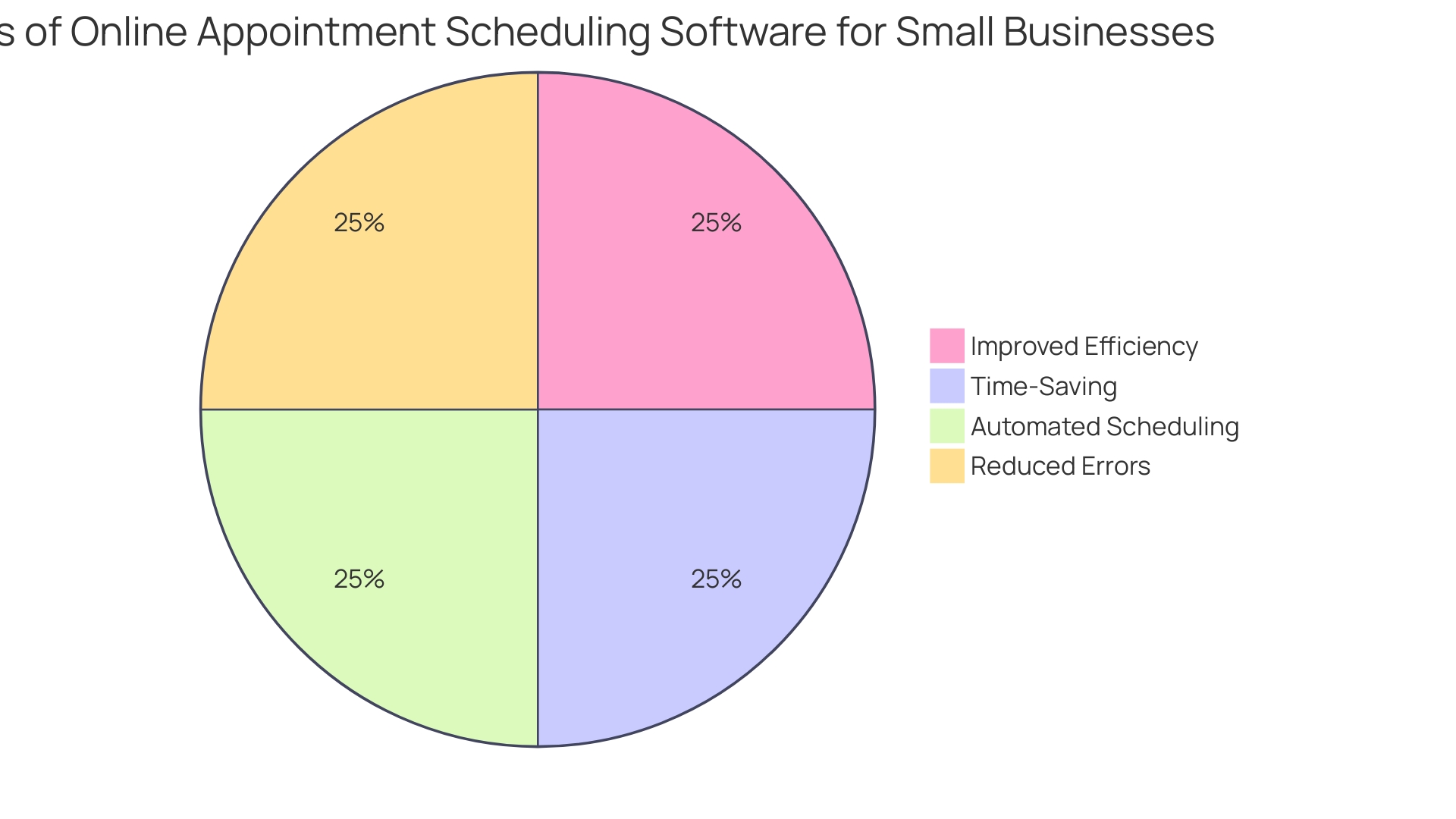
Optimizing Resource Allocation
When it comes to managing appointments, allocating resources efficiently is no small feat, but it’s essential for keeping things running smoothly. By leveraging free appointment scheduling apps and software, businesses can significantly enhance their appointment management. Let’s delve into some strategies that can help achieve this.
Firstly, analyzing appointment data is key. It’s not just about collecting information; it’s about making sense of it. By using the reporting and analytics features of your scheduling software, you can identify patterns such as peak times and high-demand services. This kind of insight is invaluable for strategically distributing staff and other resources.
Next up, balancing the workload is critical. It’s all about ensuring that appointments are distributed evenly across your team. You want to avoid overloading any individual while taking into account each member’s availability, skill set, and capacity. This way, everyone can perform at their best without burning out.
A waitlist feature can be a game-changer, too. It helps you quickly fill cancellations or last-minute openings, ensuring that you’re always operating at full capacity. This not only minimizes idle time but also maximizes the use of your resources.
Customizing your scheduling rules is another savvy move. Tailoring these rules to align with your team’s availability, service durations, and other operational variables can prevent scheduling conflicts and enhance efficiency.
Lastly, the importance of regular reviews cannot be overstated. Keeping a close eye on how your resources are allocated and how your team is performing allows you to make necessary adjustments. This could mean tweaking your scheduling rules or reassigning resources to ensure that you’re always getting the most out of your system and avoiding any underutilization or overbooking.
By implementing these best practices with the help of advanced scheduling software, businesses can save significant time—up to two hours per day, according to reports from ZocDoc’s early users. And when you consider that nearly 7,000 practices have signed up to use such tools, it’s clear that the drive toward efficient appointment management is well underway.
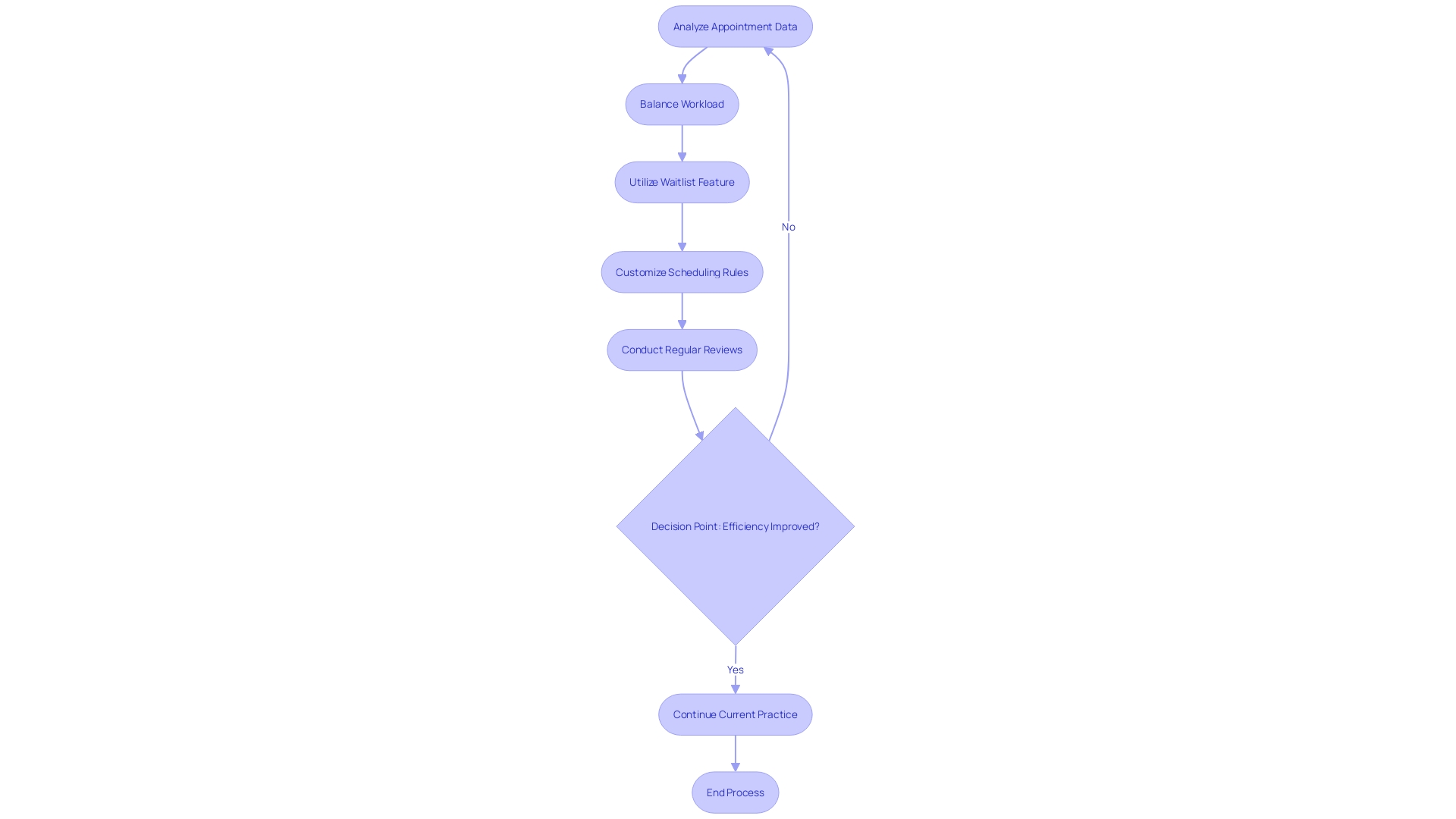
Industry-Specific Applications
From medical clinics to fitness centers, businesses across various industries are harnessing the power of free appointment scheduling apps and software to enhance operations and customer experience.
In the healthcare realm, facilities are adopting platforms like Artera ScheduleCare to meet the high expectations of today’s patients, who prioritize convenience and a hassle-free online booking experience. A staggering 89% of patients now consider the ability to book appointments anytime via online or mobile tools as essential, a sentiment that aligns with their experiences in other service sectors.
Salons and spas are also tapping into these digital tools, allowing clients to effortlessly book and manage appointments for a rejuvenating day of beauty and relaxation. This tech-savvy approach not only elevates the client experience but also streamlines staff scheduling.
Educational institutions are not left behind, leveraging software to organize meetings with students, parents, and faculty. This proves invaluable for coordinating parent-teacher conferences and other critical educational engagements.
Professionals from legal and consultancy fields are finding that scheduling software eliminates the pitfalls of manual diary management, ensuring that client meetings and consultations are flawlessly organized.
Lastly, the fitness and wellness industry is maximizing the benefits of such software to schedule classes and sessions, optimizing resources and providing a seamless customer journey from booking to workout.
Small businesses, as per a report by Small Business Trends, experience a significant boost in efficiency with these tools, which automate scheduling, minimize errors, and free up time for core business activities. As Services asserts, their booking system is designed to scale with your business, highlighting that the right software not only addresses current needs but anticipates future growth.
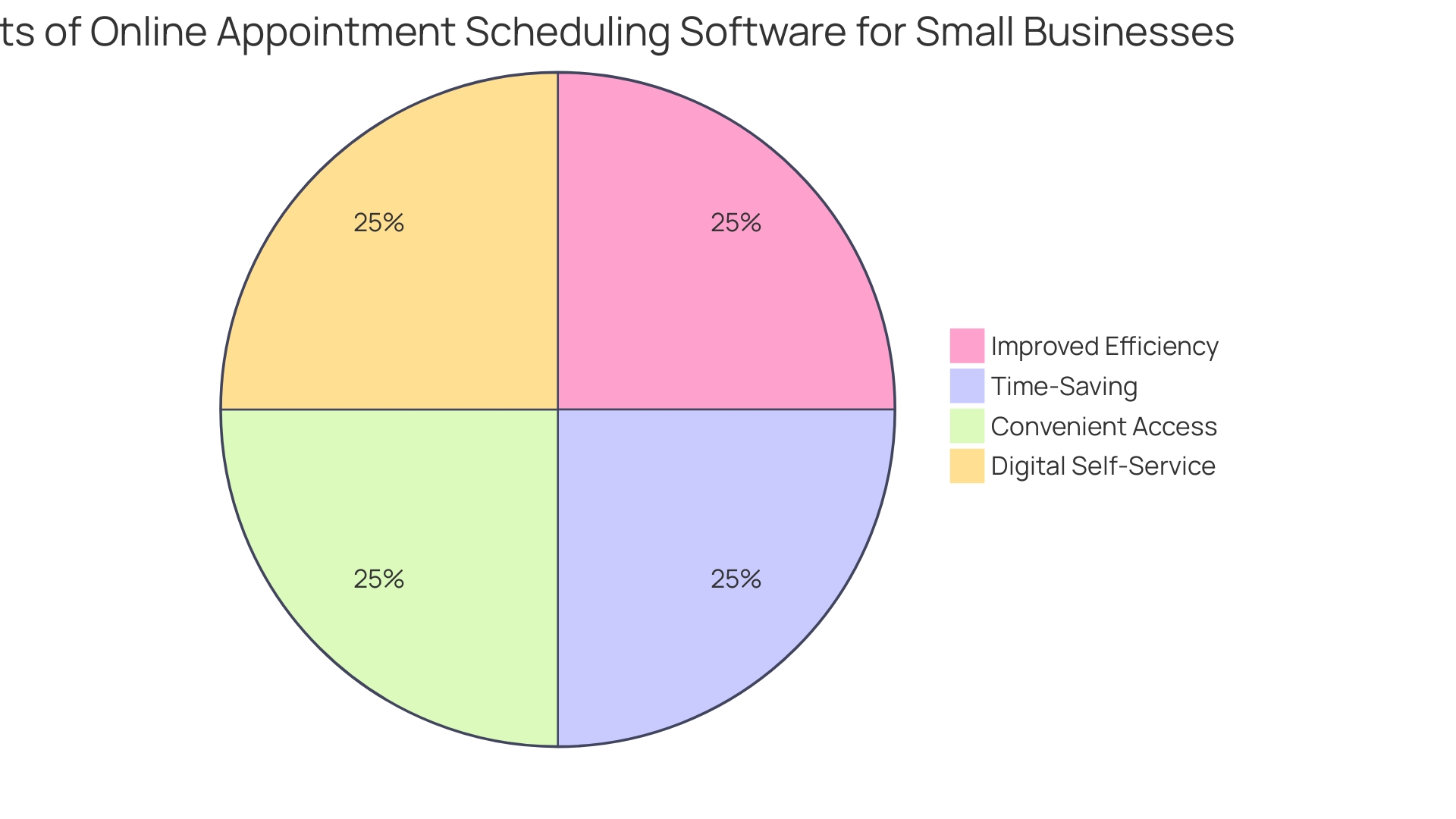
Conclusion
Appointment scheduling software has revolutionized the way businesses manage appointments. By automating the booking process and providing centralized platforms, these tools streamline operations and enhance customer service. They meet consumer expectations for convenience and transparency, optimize resource allocation, and offer valuable insights through reporting and analytics features.
One of the key benefits of appointment scheduling software is streamlined operations. It reduces manual input and minimizes errors, freeing up time for core business activities. This is particularly advantageous for small businesses looking to grow without additional administrative burdens.
Meeting consumer expectations is crucial in today’s world. The ability to schedule appointments online anytime is considered critical by an overwhelming 89% of patients. With centralized platforms and automated reminders, businesses can enhance the customer experience and ensure convenient and secure appointments.
Appointment scheduling software optimizes resource allocation by organizing calendars and distributing staff, equipment, and facilities effectively. This improves care coordination and balances workloads, leading to enhanced operational efficiency.
These tools also provide actionable insights through reporting and analytics features. Businesses can make informed decisions and streamline operations by understanding appointment trends and peak times. This data-driven approach leads to more efficient resource planning and strategic choices.
To implement appointment scheduling software effectively, businesses should identify objectives, select the right software, empower their teams through training, educate customers, and continuously enhance the system. By following these best practices, businesses can maximize the benefits of appointment scheduling software.
Moreover, appointment scheduling software maximizes productivity and minimizes downtime by automating the booking journey, sending reminders, optimizing resource management, customizing workflows, and tracking performance. These features ensure efficient appointment management and improve customer satisfaction.
In various industries, appointment scheduling software is transforming operations and customer experience. From healthcare facilities to salons, educational institutions to legal and consultancy fields, and fitness and wellness centers, businesses are leveraging these tools to meet consumer expectations and enhance operational efficiency.
In conclusion, appointment scheduling software is a game-changer for businesses. It streamlines operations, enhances customer service, optimizes resource allocation, and provides valuable insights. Whether in healthcare, beauty, education, legal, or fitness industries, appointment scheduling software is transforming the way appointments are managed and improving overall operational efficiency.
Experience the benefits of appointment scheduling software today and streamline your operations!
